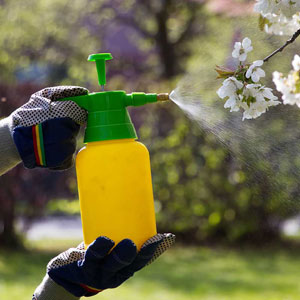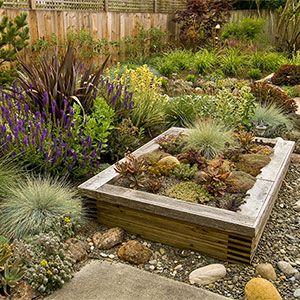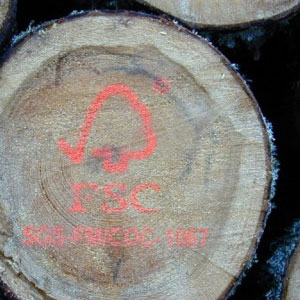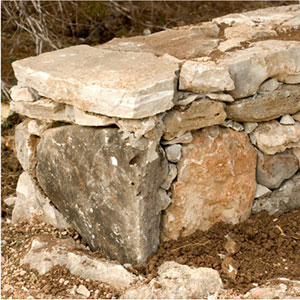
Decomposed granite trails at the Lady Bird Johnson Wildflower Center in Austin, Texas, use a local byproduct of granite mining. Image credit: Heather Venhaus
Purchase Local or Indigenous Materials
Using locally produced materials has multiple advantages. It reduces the fossil fuels and associated pollutants (including greenhouse gas emissions) required for shipping. It supports local businesses and feeds money into the regional economy. And one of the beauties of landscaping with local materials is that they seem to belong and enhance the region’s unique sense of place.
What constitutes “local” varies to some extent, depending on the type of material. The heavier the material, the more energy it consumes and the more pollutants emitted during transport, and therefore the closer the source should be.
The Sustainable Sites Initiative (SITES®) recommends the following guidelines:
- Crushed concrete and other aggregates used as a foundation for paths and driveways should be extracted, recovered or manufactured within 50 miles of the site.
- Compost and other soil amendments should come from within 50 miles of the site.
- Plants should be grown at a facility within 250 miles of the site.
- All other materials should be extracted, harvested, recovered and manufactured within 500 miles of the site.
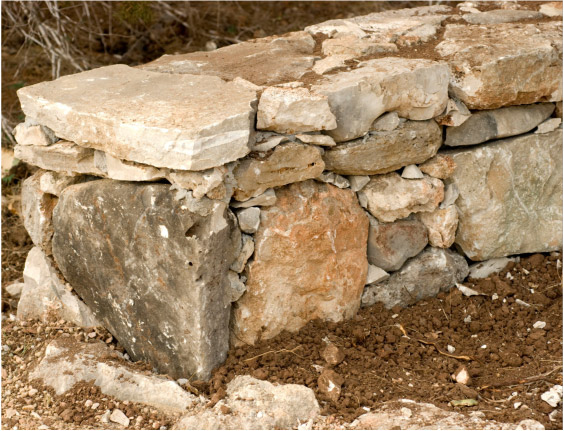
On-site materials can be repurposed in projects such as this stone wall. Image credit: Philip Hawkins
Resources for finding local materials:
- Local landscape architecture firms – Firms that have pursued LEED® certification from the U.S. Green Building Council or follow the Sustainable Sites Initiative criteria have likely conducted research and can recommend local materials.
- Local nurseries
- Local garden centers

